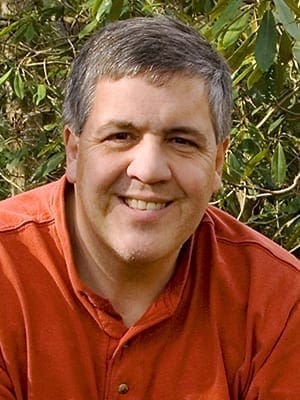I have a new hero now.
It happened by accident recently when a friend and I met in Missouri for a few days of photography in the southwest portion of the state.
We wanted to explore the prairies in the area. It just so happened that one of the prairies we visited ended up being located quite close to the George Washington Carver National Monument.
We decided we’d stop in and visit the place, which proved to be a significant decision for both of us.
Neither of us knew much about Carver other than he was an African American who became famous for studying peanuts.
In addition, I have long used a particular quotation by Carver when I do talks on God and creation: “Nature is an unlimited broadcasting station through which God speaks to us every hour—if we will only tune in.”
Based on that quotation, I assumed Carver was a person of faith. I had no idea just how much so until touring the national monument that bears his name.
George Washington Carver grew up a slave, and knew neither his mother nor father. He fell in love with nature as a young boy and, in particular, was fond of wildflowers.
With great determination he pursued an education, something that was not easy to do for a black person at that time in history.
He was extremely bright and talented. He had great artistic talent and was also a musician, but he was destined to make an impact on the world through his botanical studies.
The list of his accomplishments is staggering. In his book on Carver titled, “The Man Who Talks With the Flowers,” Glenn Clark says, “he discovered 300 new uses for the peanut and 150 new uses for the sweet potato and before he was through he had rebuilt the agriculture of the south.”
A movie about Carver’s accomplishment was shown at the national monument. After viewing it, my friend and I both marveled that most people know so little about this great man.
His story truly is an amazing and inspiring one. It is a story of one who endured great hardship and adversity but overcame it. It is a story of faith and perseverance.
Carver wrote and spoke often of the close connection between God and nature. He once said, “nature in its varied forms are the little windows through which God permits me to commune with him, and to see much of his glory, majesty, and power by simply lifting the curtain and looking in.”
At another time he said, “More and more as we come closer and closer in touch with nature and its teaching we are able to see the Divine and are therefore fitted to interpret correctly the various languages spoken by all forms of nature about us.”
Carver spent a great deal of time in communion with both God and nature. He often gave God credit for his many discoveries and encouraged people to get to know both God and nature better.
He urged people to experience nature more, saying, “Reading about nature is fine, but if a person walks in the woods and listens carefully, he can learn more than what is in books, for they speak with the voice of God.”
Once Carver came to look at the world this way, he said, “never since have I been without this consciousness of the Creator speaking to me through flowers, rocks, animals, plants, and all other aspects of his creation.”
I read a brief biography on Carver soon after my trip. It made me even more aware of what a person of faith he was.
His faith in God connected him even closer to nature and also to his fellow man. He committed his life to studying one and to serving the other, living a life characterized by humility and integrity.
He showed the world that faith and science are not opposites but companions and demonstrated what one person who lives for the glory of God can do.
For all of these reasons and more, I now have a new hero. How the world could use more people like George Washington Carver today.
 Chuck Summers is a pastor of the First Christian Church (Disciples of Christ) in Henderson, Kentucky. He is also a photographer whose work has appeared in numerous national magazines and calendars, and he has published three photography books. A version of this article first appeared on Seeing Creation, a blog Summers co-authors with Rob Sheppard, and is used with permission.
Chuck Summers is a pastor of the First Christian Church (Disciples of Christ) in Henderson, Kentucky. He is also a photographer whose work has appeared in numerous national magazines and calendars, and he has published three photography books. A version of this article first appeared on Seeing Creation, a blog Summers co-authors with Rob Sheppard, and is used with permission.
Chuck Summers is a pastor of the First Christian Church (Disciples of Christ) in Henderson, Kentucky.

